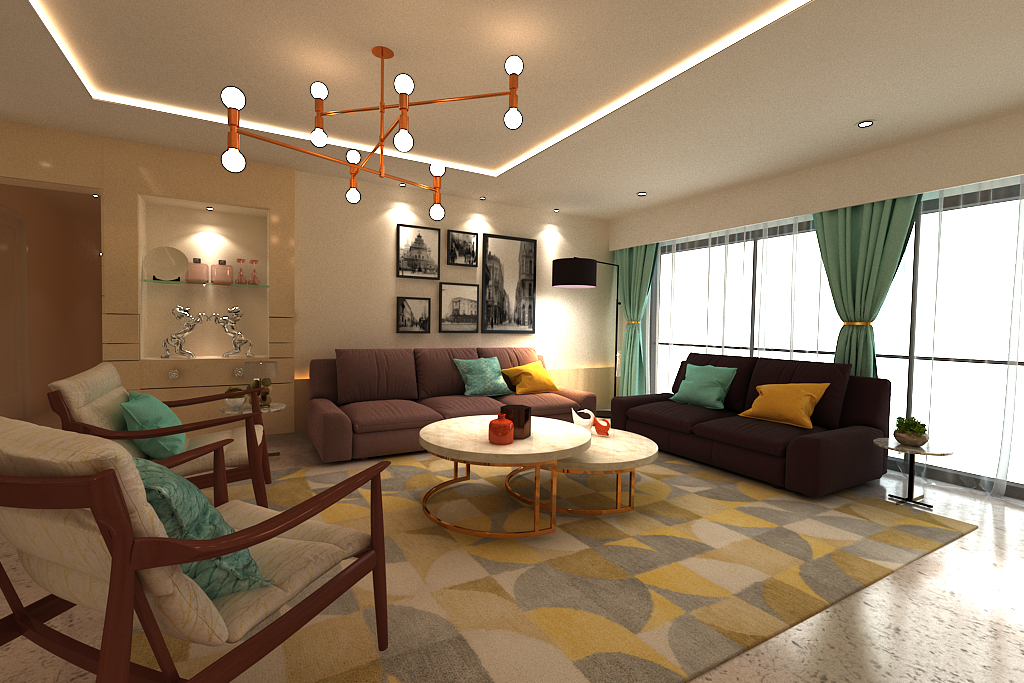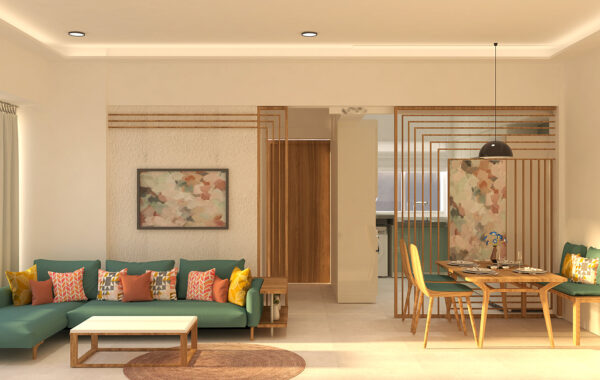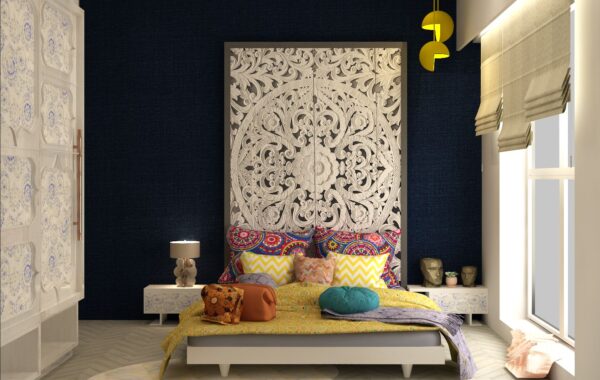Interior design often focuses on the obvious: walls, furniture, color palettes, and styling. But truly exceptional spaces—the ones that stop you mid-step, the ones that feel deeply intentional—are rarely built from just one surface. They are designed from all five.
Enter the Five-Surface Theory—a design principle that redefines how we approach a room by giving equal creative and functional value to the ceiling, floor, four walls, and even the doors. It’s a mindset shift that turns passive planes into active participants in the aesthetic, emotional, and spatial experience of a home.
As a world-class interior designer and researcher of spatial psychology, I can tell you this: If you want to take your interiors from good to unforgettable, you need to design in 360°. Here’s how—and why—it matters more than ever.

🎯 What Is the Five-Surface Theory?
The Five-Surface Theory proposes that every room is defined by five key planes:
- Floor
- Ceiling
- Wall 1
- Wall 2
- Entry or exit surface (usually the door or portal)
Each surface has the power to shape perception, comfort, and mood, yet most designs leave three out of the five barely touched. The goal is to treat each surface as a canvas for design, not just a boundary.
🪵 The Floor: The Silent Foundation of Mood
We walk over it daily, but the floor does more than hold weight. It sets the tone and temperature—literally and emotionally—of a room.
Why It Matters:
- It anchors the space visually and physically.
- It contributes to acoustic comfort.
- It defines movement, zoning, and even psychological “warmth.”
Design Tips:
- Use materials with texture and tactility: hardwood, stone, cork, or artisan tile.
- Define zones with layered rugs or color-blocked flooring.
- Consider underfoot comfort—softness in rest areas, durability in active zones.
Think of your floor as the “introvert” of the room—quiet, but essential to every interaction.
🌌 The Ceiling: The Forgotten Canvas Above
Often painted a flat white and forgotten, the ceiling is the most underutilized design surface. Yet it occupies one-fifth of your visual space.
Why It Matters:
- It affects perceived height and spaciousness.
- It holds the power to cocoon or elevate a room emotionally.
- It’s a storytelling platform—subtle or dramatic.
Design Tips:
- Add plaster reliefs, beams, or wood paneling for texture.
- Use color theory—a dark ceiling can lower the visual height and add intimacy; a high-gloss finish reflects light and opens the space.
- Consider integrated lighting sculptures, skylights, or coffered elements to add architectural dimension.
A well-designed ceiling makes a room feel curated from above, not just dressed from the sides.
🧱 Walls as More Than Color Holders
Yes, walls get attention in design—but often only as backdrops. The Five-Surface Theory urges you to make your walls do more.
Why It Matters:
- They set the emotional palette of the room.
- They influence acoustics, texture, and spatial logic.
- They can serve as functional storage, visual rhythm, or narrative space.
Design Tips:
- Mix materials: a blend of stone, wood, limewash, or fabric adds richness.
- Break up wall planes with wainscoting, molding, or vertical breaks.
- Use art, mirrors, or architectural niches not just decoratively, but intentionally to guide the eye.
Walls aren’t just painted—they’re composed.
🚪 Doors: The Emotional Entry Point
The door is often an afterthought—treated as a utility instead of a design feature. But the door is your first and last impression of a room.
Why It Matters:
- It marks psychological thresholds—transition, privacy, arrival.
- It influences how sound, light, and air move.
- It defines invitation or boundary.
Design Tips:
- Use unexpected colors, materials, or handles to make doors sculptural.
- Try full-height doors or arched entries to shift proportions.
- Consider pocket doors, barn sliders, or pivot mechanisms to increase flow and design interest.
A beautiful door doesn’t just close space—it frames it.
🔄 The Invisible Conversation Between Surfaces
The magic happens when surfaces respond to one another. A raw oak floor paired with a soft plaster ceiling. A dark painted door echoing the tone of a feature wall. A rug that mirrors the ceiling beam structure above it.
Design Principles:
- Think in planes, not parts: How does the floor talk to the ceiling? Do the walls carry the same visual rhythm across the room?
- Use repetition and contrast: Repeating material tones across surfaces unifies the space, while contrasting textures adds dynamism.
- Consider light reflection across surfaces—how natural light bounces off floors and ceilings impacts how we feel in a room.
Design harmony isn’t about matching. It’s about intentional interplay.
✨ Final Thought: Design Every Inch Like It Matters—Because It Does
Rooms aren’t just boxes to decorate. They’re environments that respond to the body, the brain, and the breath. When you design all five surfaces with care, the space becomes immersive, whole, and unforgettable.
The Five-Surface Theory isn’t about overwhelming detail—it’s about thoughtful depth. It’s about saying:
“Every inch of this space was considered. Every surface speaks.”
So next time you design a room, don’t just ask “What color for the walls?”
Ask:
- What story is the ceiling telling?
- How does the floor support how I want to feel?
- What emotion does the door invite?
Because truly great interiors aren’t just styled—they’re built with intention from every direction.


